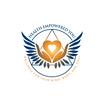|
“Ah, sugar, sugar.” Nature’s delightful creation. Almost everyone has a favorite dessert. The dessert that takes us to our ‘happy place,’ and what’s wrong with a little more happiness in our lives? Well, when happiness comes in the form of sugar it can harm our bodies and minds. Sugar can result in a host of illnesses and can lead us down a self-destructive path. Let’s take a deeper look at the impact of sugar and how we can easily cut back. What is sugar? Merriam-Webster Dictionary defines sugar as:
1: a sweet material that consists essentially of sucrose obtained from sugarcane or sugar beets, is typically colorless or white when pure, and is commonly used to sweeten foods and beverages. 2: any of numerous soluble and usually sweet carbohydrates (as glucose or sucrose) that occur naturally especially in plants. In this article we will use the term sugar more broadly. We are discussing substances that are considered sweeteners. This includes sugar and sugar like products which contain glucose, sucrose, fructose (found in fruit), dextrose (made from corn), saccharin (laboratory man-made), etc. How is sugar used in the body? Sugar is fuel for the body. It is converted to energy. There’s a great analogy we can use to describe how sugar energy works. Think of your body like an old stove that requires a fire to work. So, you go out and get some kindling to get your fire started. You gathered some twigs (sugar/simple carbs) and some firewood (fat & protein). You decide you will use the twigs since you can get them going quicker with a match than you can the bulky firewood. The twigs catch fire quickly and the stove is ablaze! You couldn’t be happier. You place a pot of water to boil on the stovetop. By the time the pot becomes warm your twigs have burned out. All that is left are ashes and the pot is cold again. This time you start to burn a piece of the firewood. It takes you a very long time to set the firewood aflame. Once the firewood catches fire it lasts for a long time. Long enough for you to not only boil water but also complete the rest of your cooking. Anyone who has been camping or has watched Survivor knows that if you want a quick and hardy fire, you start with the twigs (and coconut husks) and add the firewood once the fire is going. You don’t need to go back to twigs unless your fire is completely out. Sugar and other simple carbohydrates are like twigs. They give you a burst of energy and quickly burn out. This worked well for our ancestors when they were starving and came across a piece of fruit. The energy they got from the fruit would fuel them to hunt and gather. Today we have unlimited access to sugar. In one form or another it’s in almost all processed food. We also have abundant fruit almost year-round even in places that experience cold winters. This easy access to sugar has created unintended health impacts. Sugar is linked to: According to ScienceDirect.com:
We were never meant to eat as much sugar as we do today. The negative impacts can be prevented by cutting back on our sugar intake. It can be easier than you think to cut back on sugar. Suggestions on how to reduce your sugar intake:
Side note – if you are going to have sugar please don’t have it near bedtime. Sugar can make some people feel wired and can interfere with sleep. Do you have a sugar story to share? If so, comment below.
0 Comments
Your comment will be posted after it is approved.
Leave a Reply. |
Free content on Health Empowered You is made possible in part by our affiliates. Not all of the shared links are affiliate links. However, occasionally HEY sometimes finds services and products that are affiliate worthy. When you make purchases through our affiliates, you are enabling Health Empowered You to continue bringing you educational health and wellness information. Thank you!
Have a topic you would like us to cover? Contact us.
The information found on the Health Empowered You site, brochures, flyers, and information packets are believed to be accurate, but such accuracy cannot be guaranteed by Health Empowered You and our affiliates as we are not the originators of the underlying data. The information provided is for educational purposes only. For medical advice, please contact your doctor.
|
2024 All Rights Reserved.
The information found on the Health Empowered You site, brochures, flyers, and information packets is believed to be accurate, but such accuracy cannot be guaranteed by Health Empowered You and our affiliates as we are not the originators of the underlying data.
The information provided on this site is for educational purposes only. For medical advice, please contact your doctor.
It is accepted by both Health Empowered You and the client / reader that information shared on this site and during live sessions are in no way replacements for licensed mental, legal, or medical support. Health Empowered You works with energy and is only considered energy healing and intuitive reading. If you are in need of mental or medical care, please do contact an appropriate professional.
We share information regarding health, nutrition, and mindset. The information on this site is for educational and informational purposes only. The information found on the Health Empowered You site, brochures, flyers, and information packets is believed to be accurate, but such accuracy cannot be guaranteed by Health Empowered You and our affiliates as we are not the originators of the underlying data.
Health Empowered You is your health education portal. We investigate topics beyond the mainstream media hype. We offer you insights into health topics as well as focus on the connection and commitment each of us must make with ourselves to become and stay healthy. Our information will educate, inspire, and empower you to guide yourself down a path to health and well being.
Health Empowered You does not diagnose, cure, or treat any illness or disease. Any information provide by Health Empowered You is not intended to, cannot, and should not be expected to substitute for a personal consultation with your own physician.
When reading the information on this site, you acknowledge that it is your responsibility to work with your own physician for any medical interpretation or opinion regarding any topics covered by Health Empowered You. Before making any changes to your exercise, diet, or nutritional supplementation, your physician should be consulted. Never stop any medication without consulting your physician.
Free content on Health Empowered You is made possible in part by our affiliates. Not all of the shared links are affiliate links. However, occasionally HEY sometimes finds services and products that are affiliate worthy. When you make purchases through our affiliates, you are enabling Health Empowered You to continue bringing you educational health and wellness information. Thank you!
Terms, Conditions, Privacy, and Disclosures
Questions or comments? Contact us.
The information found on the Health Empowered You site, brochures, flyers, and information packets is believed to be accurate, but such accuracy cannot be guaranteed by Health Empowered You and our affiliates as we are not the originators of the underlying data.
The information provided on this site is for educational purposes only. For medical advice, please contact your doctor.
It is accepted by both Health Empowered You and the client / reader that information shared on this site and during live sessions are in no way replacements for licensed mental, legal, or medical support. Health Empowered You works with energy and is only considered energy healing and intuitive reading. If you are in need of mental or medical care, please do contact an appropriate professional.
We share information regarding health, nutrition, and mindset. The information on this site is for educational and informational purposes only. The information found on the Health Empowered You site, brochures, flyers, and information packets is believed to be accurate, but such accuracy cannot be guaranteed by Health Empowered You and our affiliates as we are not the originators of the underlying data.
Health Empowered You is your health education portal. We investigate topics beyond the mainstream media hype. We offer you insights into health topics as well as focus on the connection and commitment each of us must make with ourselves to become and stay healthy. Our information will educate, inspire, and empower you to guide yourself down a path to health and well being.
Health Empowered You does not diagnose, cure, or treat any illness or disease. Any information provide by Health Empowered You is not intended to, cannot, and should not be expected to substitute for a personal consultation with your own physician.
When reading the information on this site, you acknowledge that it is your responsibility to work with your own physician for any medical interpretation or opinion regarding any topics covered by Health Empowered You. Before making any changes to your exercise, diet, or nutritional supplementation, your physician should be consulted. Never stop any medication without consulting your physician.
Free content on Health Empowered You is made possible in part by our affiliates. Not all of the shared links are affiliate links. However, occasionally HEY sometimes finds services and products that are affiliate worthy. When you make purchases through our affiliates, you are enabling Health Empowered You to continue bringing you educational health and wellness information. Thank you!
Terms, Conditions, Privacy, and Disclosures
Questions or comments? Contact us.




